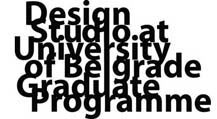OBESITY
This project studies obesity. It will try to unravel relationship between dietary habits, education and architecture. Obesity is a medical condition in which excess body fat has accumulated to the extent that it may have a negative effect on health. Such condition may be understood as an access accumulation of energy in an organism, created by the disbalance between calories consumed and discharged. This is a consequence of several intertwined factors such as: genetic, psychological, cultural, social and environmental. This project will explore the relevance obesity and the idea of energy accumulation in architecture, both as a theoretical model for spatial organization but also as a programmatic determinant for the environment composed of facilities for education, recreation, fun and agriculture.
Ovaj rad istražuje odnos između gojaznosti, ishrane, fizičke aktivnosti, edukacije i arhitekture. Gojaznost je hronična bolest koja nastaje kao posledica više različitih faktora (naslednih osobina, psiholoških, kulturoloških, socijalnih, metaboličkih, fizioloških). Geni i okruženje udruženi su u promociji gojaznosti. Geni su omogućavajući faktor, ali epidemija gojaznosti podstaknuta je lošim okruženjem hrane i obrazaca fizičke aktivnosti. Jedini način kako se gojaznost može masovno tretirati jeste putem edukacije. Obrazovne institucije su u obavezi da edukuju decu i mlade o pravilnoj ishrani i fizičkoj aktivnosti, kao i da u sklopu regularnih dnevnih obaveza učenika uspostave režime zdrave ishrane i dovoljene fizičke aktivnosti. Predloženi program projekta čine internat (odnosno škola sa stanovanjem), igralište i zasad. Tri elementa uspostavljaju specifičan međusobni odnos kroz energetsku razmenu. Agrikulturno zemljište služi za proizvodnju biljaka koje se koriste u ishrani ljudi i dece u internatu. Deca koriste igralište koje stvara energiju posredstvom sistema za skupljanje mehaničke energije. Prikupljena energija koristi se u održavanju zasada i škole. Gojaznost se može posmatrati kao taloženje viška energije u organizmu stvaranjem disbalansa između količine energije koja se unosi hranom i potrošnje energije. Koncept projekta je da se energetski disbalans koriguje tako što bi se uspostavila veza između svih energetskih potencijala – čoveka, hrane i arhitekture. Cilj je da se interni problem reši eksterno, odnosno da se problem gojaznosti tretira kroz okruženje. To će uticati da arhitektonski objekat prestane da bude materijalna forma koja je usvojena na osnovu određene energetske konfiguracije, i postane kompleksan sistem koji reaguje na spoljašnje i unutrašnje promene.
Reference:
- Brownell, Kelly, i Katherine Battle Horgen. 2004. Food Fight: The Inside Story of the Food Industry, America’s Obesity Crisis, and What We Can Do About It. McGraw Hill, Chicago.
- Pool, R. 2001. Fat: Fighting the Obesity Epidemic. Oxford University Press.
- Gorman, Nicholas, Jeffry A. Lackney, Kimberly Rollings, i Terry T.-K. Huang. 2007. Designer schools: the role of school space and architecture in obesity prevention. Obesity 15. pp. 2521-2530.
- Díaz Moreno, Cristina, i Efrén García Grinda. 2009. Energy Forms. Architectural Design: Energies: New Material Boundaries. pp. 76-83.
- Gregory, Rob. 2007. Learning curve. The Architectural Review. pp. 32-39.
- Franck, K. A. 2005. Food for the City, Food in the City. Architectural Design: Food – The city. pp. 35-42.
Film:
- The man who made us fat. Jacques Peretti. BBC 2, 2012.
- Globesity: Fat’s new frontier. ABC Australia, 2012.
- The foods that make billions. BBC 2, 2012.



